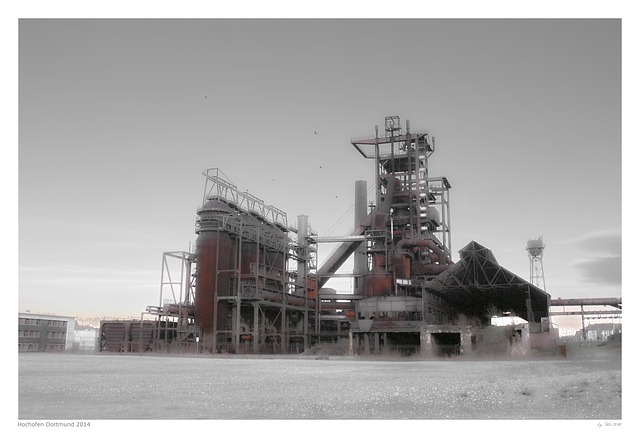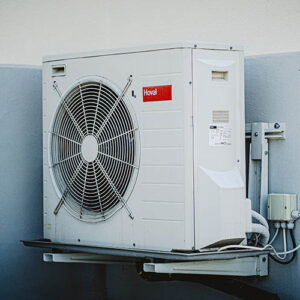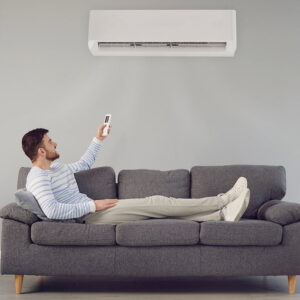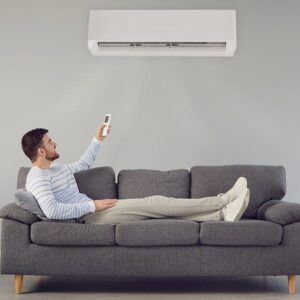Winters can be quite chilly, even in Texas. You should check your heating system to make sure it is prepared for the coldest temperatures of the year before the cold weather arrives. How to light furnace pilot?
Verify the furnace’s pilot light. The pilot light for your furnace may be among the most crucial components of your heating system. No matter how high you turn the thermostat, without it, your gas furnace won’t light. Fortunately, most of the time, relighting your pilot light is fairly simple. You’ll be prepared for pretty much anything winter throws at you with the knowledge in the following paragraphs.
Table of Contents
What Does A Pilot Light Mean?
The type of igniter known as a “pilot light” is typically found in older furnaces. These furnaces may be up to 30 years old in some cases. It will only be present in gas HVAC systems because it is just a gas flame. There won’t be a pilot light if your house is entirely powered by electricity.
The larger gas burners in your furnace use the light as an ignition source. These burners will start to light when your thermostat instructs your furnace to turn on, supplying heat to your house. The initial flame source, which is your pilot light, must be operational for the larger burners to ignite.
When you feel air escaping from your vents, but it isn’t warm, that is the telltale sign that your pilot light is out. Your pilot light might be the issue if all that’s involved is air that’s at room temperature.
The use of pilot lights in HVAC installations is a dying breed. Each year we see fewer and fewer furnaces with standing pilot lights. The percentage of furnaces with pilot lights that we see in Central Ohio, in my estimation, is only about 5%. Constantly burning natural gas and raising your utility costs are two long-term costs of having a flame on. Even in a furnace that burns natural gas, an electric igniter is utilized in most contemporary equipment.
Differentiating Usages of the Term Pilot Light
Sometimes, the term “pilot light” can refer to the ignition source for other appliances, like ovens or fireplaces. It can also refer to a device’s indicator light, which indicates whether the device is powered on and operating properly.
For the sake of this discussion, we will only discuss your furnace’s pilot light.
How To Light A Furnace Pilot Light?
Here, we’ll outline the fundamental procedures for re-igniting a gas furnace’s pilot light.
Checking And Preparing The Furnace
Check the power. Make a few simple inspections of your furnace before attempting to relight it. Check to see if it is connected to the gas and electric sources. The thermostat may require new batteries even though your furnace is operating properly.
Check to see if your pilot light is still on by finding it. You can typically find the pilot light at the bottom of the furnace. It is a small burner that lights the larger furnace burners. You should be able to see a tiny flame if it is on. To get your furnace working again, you may need to relight the pilot light if it went out due to a draft.
Switch off the furnace and give the gas five minutes to escape. Locate the switch near the base of your furnace; it will typically have the words “pilot,” “on,” and “off.”” You must wait for five minutes after turning it off to allow the gas to completely dissipate. Trying to relight the pilot light could be risky otherwise.
- Check the instructions label on the furnace if you’re having trouble figuring out how to turn it off.
- Don’t relight the pilot if you can smell gas.
Locating The Instructions Label On Your Furnace
Every furnace ought to have a label that explains how to light it. However, occasionally the printing might be insufficient or the furnace area might be dim. In these circumstances, the label might be challenging to read. Keeping the following instructions near your furnace or in another safe spot where they can be located easily will make the task much easier.
Finding Pilot Light And Components
Your furnace has a switch that typically has the words “Pilot,” “On,” and “Off” written on it.” Locate this switch, then flip it to the “Off” position. Ten minutes at the very least. This is crucial to prevent the possibility of a fire from starting because it gives the gas time to dissipate. Take note of where the reset button is while you wait; it should be close to the dial you just set to “Off.”

Re-lighting The Pilot Light
Turn the knob to “Pilot” after the gas has had a chance to dissipate.” Next, while keeping the “Reset” button depressed, approach the pilot light opening with a long lighter’s flame. The furnace pilot light ought to ignite as a result. Release your pressure on the reset button once you’re certain the pilot light is on.
Check to see if your furnace is working by turning it on. The pilot light opening may be blocked if the pilot light goes out. You can clean it by turning off the gas, waiting five minutes, and using fine wire to clean the opening.
- Once you’ve lit the pilot light, if it still won’t turn on, there may be a different issue at play. To fix it, you might want to get in touch with a furnace repair expert.
Lighting A Pilot Light When It Goes Out
There are DIY options available to relight a pilot light in this situation, which is good news if there isn’t a bigger issue with a part or system.
The bad news is that hiring a pro to fix it might be the only option if it’s a bigger issue, like a busted part or leak.
Here are some steps you can take to get it back up and running, presuming yours is the type that is easily repairable:
- Consult the Manual. The owner’s manual for your furnace should have instructions on how to relight the pilot light, if you still have it. This manual will be more helpful than anything you could find online because it will be tailored to your system rather than being general advice.
- Turn the Gas Off. And turn it off for a minimum of five minutes. To allow any ambient gas to dissipate, do this If not, you risk hurting yourself while relighting.
- Reset and Light. Restarting the gas will enable it to escape from the pilot light orifice after five minutes have passed. Most systems have a dial that can be turned to “Pilot” to let gas flow once more. Additionally, there ought to be a reset button that you should press. Holding a long lighter flame (the kind typically used for grills) up to the pilot light should turn it on after the system has been reset.
Although the relighting procedures for pilot lights on appliances like water heaters and ovens are similar, we’d advise you to find resources on those particular models to make sure you’re taking any potential differences into account.
Read about: How To Tell If Water Heater Is 120 Or 240?
Observe The Expert Advice
Never try to light a pilot light without turning the furnace off. This may result in severe property damage or bodily harm. The furnace must be turned off for at least five minutes before the pilot light is attempted to be lit.
When lighting the pilot, keep your hands as far away from the flame as possible. The best way to start a pilot light is with a lighter with a long barrel or a long matchstick. Avoid handling an open flame when it’s close to your furnace!
If lighting the pilot doesn’t work after a few attempts of this process, you might want to try cleaning the area around the pilot light. The flame may go out or not even start if there is an accumulation of dirt or debris in the area.
Thermocouples And Flame Sensors What They Are And When They Go Bad
Although they are frequently used synonymously, these two terms have some subtle differences. The safety devices that detect a functioning flame in your system are mentioned in both, though.
On systems with an electric igniter, flame sensors are employed. It can tell if the burners in your furnace are operating properly. But this is for the burners themselves, not a pilot light.
If you hear the term thermocouple but your home has a pilot light, don’t be alarmed; thermocouples are also referred to as flame sensors. The pilot light’s flame and copper rods known as thermocouples directly interact. The safety trigger will activate if the light misses the thermocouple.
The distinction between the terms isn’t as crucial as understanding the type of furnace system you have to accurately diagnose the issue if you experience a lack of heat.
My Pilot Light Is Going Out, Why?
A pilot light going out could have a number of causes. The following is a list of the most frequent causes of an extinguished pilot light, though it is not necessarily exhaustive.
- Dirty pilot light. There may be some sort of debris in the shaft from which the light emanates. This might make it difficult for the light to function. Even with the light on, this is usually obvious. You are probably dealing with a blockage or buildup if there is obvious flickering, one side appears to struggle to light, or the flame’s base is yellow rather than the hotter blue.
- Thermocouple dysfunction Time causes parts to deteriorate. There is no getting away from it. The thermocouple may malfunction, but that does not mean it is inherently flawed. It might imply that something is simply out of alignment or demands a thorough cleaning.
- Drafts. Don’t you think the utility closet or basement is drafty? Reconsider; it might be. We frequently assume that drafts originate from the outside of the house, but ductwork leaks or inadequate return air supply sizing can produce airflows strong enough to put out a pilot light. You might have air leak problems that need to be examined if the materials, such as the light itself and the thermocouple, appear to be in good condition.
- Gas supply. Despite being uncommon, this can happen to any gas-powered appliance in your home. It might be time to call your gas company to come out and inspect the line leading to your home if your pilot light isn’t the only device that’s giving you trouble.
The Protection Of Pilot Lights
There will always be at least one safety device in a pilot light system. When something goes wrong, this device serves as a cut-off switch and is designed to detect the flame.
The concern is that you might be releasing gas into your home if your pilot light isn’t lit but your heating system is still trying to heat up. This poses a very obvious risk, making it crucial to address a malfunctioning pilot light right away.
Below, we’ll talk about two similar safety tools: flame sensors and thermocouples. We’ll go over each one’s operation and the steps required to correct it.
What Should I Do If My Pilot Light Remains Dim?
The integrity of your furnace and ventilation system may need to be checked if your pilot light won’t stay lit.
Several typical causes for a pilot light to keep going out include:
- alterations to your ventilation system. Your ventilation covers may be shifted by wind and precipitation, further exposing your pilot light to the elements.
- problems with your thermocouple To detect when your pilot light is on, a thermocouple is a safety device. Your thermocouple might not be able to detect that the pilot is on if it’s dirty. The gas valve shuts off as a result. Your thermocouple might be malfunctioning if your system repeatedly tries to start before shutting down once more.
- your gas valve is having problems. Your gas valve provides the fuel for your system. There may be a problem with your gas valve if neither the pilot light nor the system will turn on.
- The heat exchanger you use has cracks. Your heat exchanger may crack after many cycles of heating and cooling. The system’s airflow may be altered by these cracks, which could cause your pilot light to go out.
You can probably examine your ventilation system yourself for minor modifications, like a missing rain cap. However, a skilled HVAC specialist should identify more complicated problems.
How Much Does Repairing a Pilot Light Cost?
You should be able to replace a Type B vent cap for less than $50 depending on the size of the pipe. However, it can get quite expensive to replace a masonry chimney cap, gas valve, or heat exchanger.
How much would it cost to fix these problems?
- Replacement chimney caps can cost between $35 – $750, depending on the material the cap is made of.
- Replacement thermocouples can cost between $100 – $250.
- Replacement gas valves start around $350.
- Heat exchanger repairs start around $100 but can cost thousands of dollars. HVAC repair is akin to having your heart operated on: these are labor intensive repairs that require a highly skilled technician.
- Replacement heat exchangers can cost $1,000 – $2,000 under warranty. However, you might have to pay up to $3,500 to replace your heat exchanger if the parts of your furnace aren’t covered by warranty.
A heat exchanger might be covered under warranty for the first 20 years of your system’s life, depending on the brand. It’s also important to remember that parts warranties typically don’t cover labor costs and other fees — only the cost of the parts.
Three things are necessary to determine whether your system is still under warranty: the brand or manufacturer, your furnace’s model number, and your furnace’s serial number.
The data plate on your furnace should have all of the answers you need. The typical location of data plates in older furnaces is inside the furnace’s cabinet.
Open your furnace’s front panel and look for the data plate. The data plate is typically visible on the left or right inner panels.
The quickest way to travel from Raleigh to Myrtle Beach is by car, with tickets costing an average of 18 USD and a 3-hour journey.
Conclusion
Understanding how to start a furnace’s pilot light is essential.
On a chilly winter day, you attempt to turn on your furnace but it won’t turn on. If you have a vintage furnace with a pilot light, this might indicate that it needs to be relit. You don’t need to spend money calling a repair person out because this is not a difficult or dangerous fix. You’ll quickly get warm and cozy again if you stick to the instructions we’ve provided below.





